Key Takeaways
- Detail your current situation
- Prioritize top goals and needs
- Have examples of what you like
- Know what you don’t know
- Be ready to talk budget
Updated 8/5/24 - This post was recently updated to combine some sections, add a new section about Content Management System integrations, removing some dated pieces of information, and providing more up to date content to help you best write your website project RFP.
If you're in the services or consulting business, you know all about RFPs: Requests for Proposal are how many professional agencies win new work. NMC receives a lot of them from organizations around the world wanting either to upgrade their existing web presence or start from scratch with a new one. Some of them are clear, detailed, and provide the right kind of information to help us quickly write a great proposal. Others, not so much! Writing them can be daunting since you probably don't spend all day making websites and apps, but with the right guidance you can draw up one that's useful and concise.
An RFP is the face of your company to potential collaborators so it’s important to compose them well. Good ones lead to good proposals, good proposals lead to better working relationships, which leads to better better projects and outcomes. So what should you include if you want to write a good one? What details do vendors need to know about your project to bid accurately? What questions should you be asking them to assess their fitness and capability? There's no need to become an expert in web design to write an RFP if it can establish clear goals, provide the right details, and solicit useful information from vendors. This post strives to outline what to include in an RFP, how to plan your project, and even provides a free RFP template below for you to use!
The Elements of RFP Style
Sending out an RFP is a pretty standard operating procedure: potential clients determine a rough scope of the job to be done, assess the timeline and budget available, then reach out to vendors asking them to propose a solution (and themselves) as the best fit. They’re usually followed by a question-and-answer period and the more useful details you can include up front, the less back and forth there will be with the vendors later.
To help you write yours, we compiled a handy list of key points. The steps below are straightforward and should be enjoyable to think through; after all, the end product is that you get to describe all the ways someone can help make your life easier with an awesome website.
Of course, not every one of these items in this list needs to presented in this order, or grouped together this way, or at all. It does represent the most important things vendors care about and we grouped them together in the way that makes the most sense to us. If you want to keep it simple, you can just use each of the headings below as a different section in your document. Or just download our example web design RFP word document template, also available as iWork Pages.
Table of Contents
- Brief Project Overview & Your Organization’s Background
- Project Goals & Target Audience & Goal Conversions
- Sitemap and Information Architecture
- Scope of Work and Deliverables
- Timeline
- Technical Requirements
- Content Management System Goals
- Principal Point of Contact
- Budget: Assets ("Parts") & Service ("Labor")
- Ongoing Support / Retainer
- Analytics
- Web Hosting
- Web Design Examples for Websites RFP
- Criteria for Selection
- Format & Proposal Timeline
1. Brief Project Overview & Your Organization’s Background
Introduce your organization and the purpose of the RFP. State not only what you want the service provider to do but also why: what is the central “pain point” your organization has? If it’s a website redesign, what about the current one isn’t working for your purposes? This is high level, so be brief. The details will come below and a birds-eye view is fine.
Describe your organization, what it does, and what you do. There’s a good chance we’ve never heard of you and may not be able to figure that out by visiting your existing web site (which may be why you need a new website). Additionally, tell us a little about your values. What makes you unique? Why does what you do matter?
Why It’s Important: Rather than describing a solution, try articulating the problem as best you can. There may be all kinds of solutions available that will meet your needs better than what you have in mind and web professionals can suggest solutions you may not have thought of yet. By focusing more on the job to be done, it encourages the responder to think outside the box.
By describing your values, you’re more likely to find an organization that’s a good value fit both for your goals and processes. Firms may have a specialty in a certain area of web design (e.g, lead generation, B2B, etc.), and by knowing if you fit into one of their niches, they can make better recommendations.
For example, one of our specialties is nonprofit website design. If we know up front you're a nonprofit, we can make specific recommendations from our team members that have a lot of experience and familiarity with how nonprofits succeed on the web. However, if you're looking for a law firm website design, we'd make very different recommendations, since they not only cater to different audiences but often involve different technologies.

2. Project Goals & Target Audience & Goal Conversions
Explain what you plan to accomplish or what outcome you have in mind. What are the three most important things that, if done well, will make the redesign a success in your eyes? Do you know of any quantitative metrics that will help, such as increased sales or more newsletter subscribers or better-qualified leads? Think in terms of what you want visitors to the site to do, not just what you want them to see.
In addition to determining project goals, you’ll want to think about who your website is meant to serve. It's very common for websites to have to address multiple different target audiences, but understanding those audiences upfront can make a huge difference. Which target audiences will be most reliant on your organization’s new website? Are some audiences higher priority than others? It can help to rank the groups in order of importance. For a nonprofit, a list of target audiences could look like this:
- Prospective program participants
- Prospective donors
- Corporate partners
- Event attendees
- Volunteers
- Potential hires
- Press & media
To take the next step, pair each target audience with a goal conversion – i.e. the action that you want them to take. Conversions are a great way to measure site visitor engagement, and they’re important to consider because the goals differ for each type of site visitor. For example, you may want a prospective program participant to sign up for an event series, while you’d want a potential hire to submit a job application. In the B2B space, sample goal conversions include encouraging consumers to reach out to your sales team, request a product demo, or place an order through your eCommerce platform. While for nonprofit website design projects, clients will likely care more about donations, paths for visitors to get involved through advocacy, and other CTAs more relevant to their group.
Why It’s Important: It goes without saying, but the more clearly you articulate what you want out of the process, the more likely you are to get it. Knowing both the concrete goals and specific site visitors whose needs you’re trying to meet makes the development team’s job that much easier. It also means when facing a decision point, you’ll be guided more by objective outcomes than personal preference. Also, by helping your partner understand the different conversions for each audience, the design can be more tailroed based on the audience likely visiting that section -- NMC often recommends letting audience and persona-types drive the navigation of a site, and this approach lets you have the conversions and sections laser focused on each group.
3. Sitemap and Information Architecture
One of the main reasons people reach out to NMC for a redesign, beyond a dated visual aesthetic, is that the content is poorly organized or hard to find. As much as the visual design impacts visitors' perception of your company, the information in turn reflects how well you've thought through your major site sections and navigation schema. If you already have a good idea how you'd like to reorganize it, include that here. (If not, that's OK too! Expect it to be one of the first things you'll do during the discovery phase with your vendor.)
The sitemap will help you determine which new content you need to write and what from the existing site will be migrated. Much of it may be outdated or irrelevant, so new copy will need to be written (especially if you're introducing a new product, service, or initiative). What does make it over to the new site will have to be imported into the content management system; be sure to let the vendor know whether that's something your team plans to do or whether you expect the vendor to handle it. Giving the vendor an idea of what content is moving helps them understand the size and scope of the site.
In addition to the importance of determining how the content will be organized, it's also helpful to know how it will be connected. Should certain pieces of content feed to different areas based on a category system and do you want to make sure that there are related content items throughout the site? Just understanding the depths of the connections between different content will help the firms better understand the complexity around the content.
Similarly, providing a sense of how important search is for the site and if there should be different filters and categories on the search and if it should be exposed in different areas of the site (e.g., a separate search for Products or People) will help inform whether third-party search technology needs to be incorporated and also help respondents think through how to best keep the site performant for you.
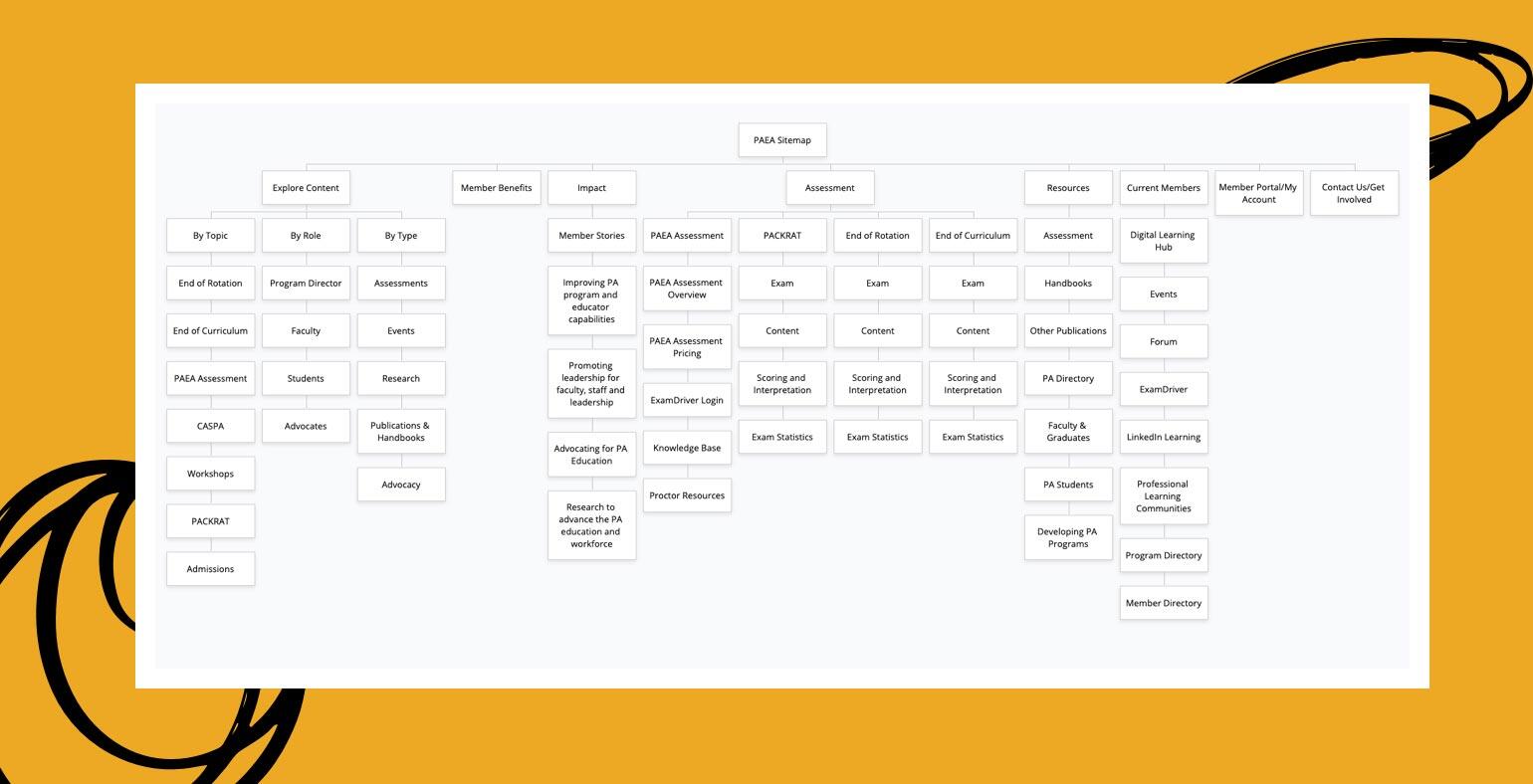
Why It’s Important: Next to the Technical Requirements (below), many web vendors use a sitemap to identify the different kinds of content that the site needs to publish — such as blogs, articles, news, photo galleries, case studies, etc. — to determine how many distinct templates or views must be uniquely designed. Many kinds of content will use the same but additional design time is needed for each custom layout.
The sitemap also helps your new partner understand the importance and hierarchy of things on the site and whether that is in balance with what you've outlined in other areas of the RFP. For example, if there's a focus on one target audience in the RFP, but their content isn't easy to navigate to, the web vendors will probably want some clarification on whether that's intentional or a mistake.
4. Scope of Work and Deliverables
Here’s where you want to provide more detail about the project. To the extent you can, describe all the services you know that you’ll be hiring a web team for. For example, with a web redesign project, you might be paying for:
- Project management
- Content strategy
- Copywriting
- Illustration
- Information design
- Visual design
- Search engine optimization
- Front-end coding (HTML/CSS, animations)
- Back-end coding (CMS, 3rd party APIs, custom software/features)
- Custom software or app development
- Mobile device optimization
- Accessibility audit
- Testing & quality assurance
- Paid search placement/advertising
- Software training
- And more
For a task like Information Design, maybe the deliverables are a sitemap and wireframes. For Visual Design, it might be source files in Photoshop or Figma format. Something like Project Management doesn’t really have a deliverable but it’s a non-trivial part of the process and doing it well is a valuable part of successful projects. Aim to be explicit about what's important to be delivered but it’s OK if you don’t know exactly what’s involved.
Also, there may be parts of the overall deliverable (new website!) that are more important to you than others. We've had clients tell us "design is important of course, but what we really care about is SEO performance -- our design could stay the same, and if we had better SEO, this project would be a huge win." Similarly, some groups make it known upfront that they have no idea what they want aesthetically and have a lot of stakeholders, so the website discovery and creative brief process will be really critical to build a strong foundation. Details like that are really helpful in not only gauging the scope of the project but also to tailoring the details within the proposal.
Why It’s Important: Some creative firms look at a task, estimate the typical time to completion, and arrive at a cost by multiplying by an hourly rate. Your vendor is trying its hardest to scope out the work and knowing what the team is in for means you get a more accurate estimate. We can outline and build a better plan for you by having a more comprehensive understanding around what matters the most to you and your team.
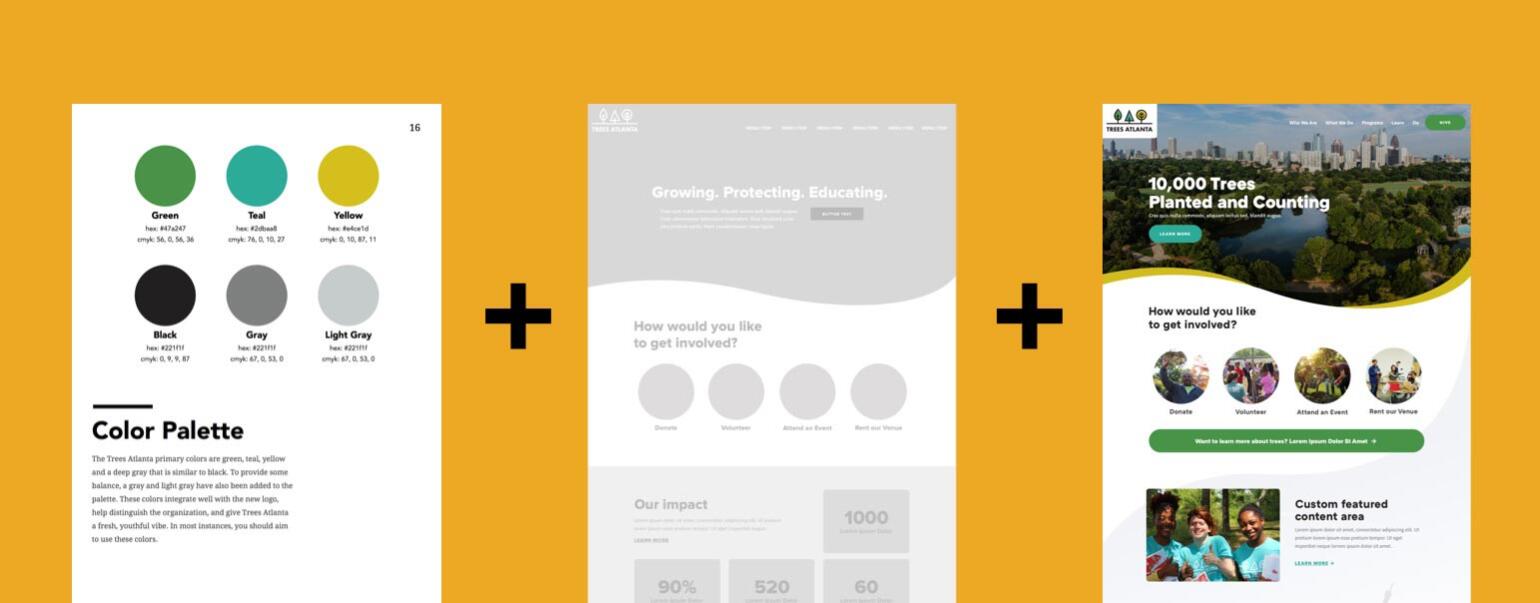
5. Timeline
“Be advised: web sites vary widely in their time to completion…Be upfront about your timeline, and your vendors will be honest about its likelihood.”
You may not know how long something will take to do, but you likely do have a timeline you have to accomplish it within. Is there some hard deadline you need to hit, such as the launch of a new product or ad campaign? Maybe you have a big trade show coming up and need the site live by then? Be sure to mention any firm dates beyond the vendor selection process.
Be advised: web sites vary widely in their time to completion. Even very simple sites can take as much as 8 weeks; it can take time to assimilate your organization’s goals, values, and unique market proposition. In other cases for complex sites or web applications, 9-12 months is not unusual. Be up front about your timeline, and your vendors will be honest about its likelihood.
Why It's Important: So the vendor knows whether or not it's possible to finish the project on time! Also, responsible vendors will also typically help you understand whether you've set out a realistic timeline or not -- if we see a scope and timeline that don't align, we'll let the client know to see if they have flexibility and help them identify the priority items for launch.
6. Technical Requirements
This is a pretty broad subject but your goal here is to describe what limitations or requirements you know in advance. A website is, at its core, a technical software product, so these are the details that may most materially impact the schedule and deliverables. Some examples of technical requirements include:
E-commerce: Do you expect to sell products or charge credit cards? A nonprofit may only want to accept simple (or recurring) donations but retail merchants require shopping carts, user accounts, inventory control, and shipping calculators. If you're accepting donations or selling things, are there any additional rules that should be incorporated, such as discounts for certain users, gift cards, etc. All of these details will help vendors recommend the best tools for the project.
Content Management Software: Do you require something specific, such as Drupal or Wordpress? Are you open to alternatives you may not be familiar with? (There are literally thousands of off-the-shelf CMS software options.) The vendor may also have developed an in-house solution that will meet your needs well. Large projects can require writing custom a platform for your company. It's also totally acceptable here to say you have no preference and are open to recommendations from the vendors.
Backend Programming Language: For custom web software development, is your system compatible only with a specific language, such as PHP, or Ruby, or Python? Do you have an existing infrastructure that the vendor needs to be fluent in?
Legacy Browser Support: How many visitors are still on old browsers, such as Internet Explorer 11 (released October 2013)? Do they need to be supported? To make a website perform or display in a legacy browser almost always requires additional development time.
Third-Party Software Integrations: Does your organization depend on 3rd party services for things like email newsletters, marketing automation, nonprofit online donation and fundraising tools, CRM / contact management, inventory control, intranet, accounting / Quickbooks, or inventory management? If so, be sure to include the ones for which synching / integration with the website is essential and describe how you expect it to work. For example, when someone subscribes to a newsletter, the contact should be added automatically to Highrise or Salesforce. If someone purchases a product and opts in, she should be added to our Mailchimp database, etc. Sometimes this functionality will be included out of the box and sometimes the vendor will have to write something custom.
Member Management: Do you require membership management on your site? This would be for allowing people to access special or hidden content on your site, perhaps after submitting an email address or paying to view a whitepaper. A simpler example would be password-protected pages that anyone can see with the same password and does not require a logged in account.
Goal Level of Accessibility or Special Considerations: Do you require the website to be accessible to blind or limited-vision users? This is an increasingly common item in RFPs, and it's important to know that accessibility requirements fall on a spectrum and you should know just how far you want to take it (or leave it to the web agencies to make a recommendation). For websites whose audience skews older, larger default text and click areas will inform the design. Government & public sites often require Section 508 compliance.
Translated Content: Do you want visitors to be able to access your content in different languages? If so, there are several different approaches to translating website content -- AI automated translations on the site, manual translations through the CMS, or just letting the browser do it automatically. You may have a preference or you may not, but this is a feature that often comes up and prompts a discussion around approach and implementation, so be sure to mention it if its important to you.
7. Content Management System Goals
As noted above, understanding a platform mandate can be the sole determining factor on if we participate in an RFP or not; there are some systems that specific firms just don't work with or may alter the budget to a point where it no longer makes sense for them. However, nowadays, most folks we speak to don't necessarily have a mandated platform. However, they do have some clear views on what the CMS should enable them to do or how they'd like for it to work. This information is very helpful in the initial request!
Everyone wants an intuitive system, so we know that! Pieces that can be really helpful to understand are whether there should be multiple levels of editor access to different pieces of content, if there are any specific styles of editing you like, and if there are setups in the past that really have not worked well for you.
If you do have a clear idea on what platform you want, such as WordPress or Drupal, there could be connected technologies, plugins, or modules that you've used in the past before that you'd like included in the build. For example, your current WordPress site may leverage Gravity Forms or Yoast SEO and you know that you want to leverage those tools in the new one; knowing that upfront will not only enabble a firm to think through the eventual tech stack, but also to think through how to make the transition easier for you by using your existing license to import settings or something similar. If you don't have a super strong preference on individual pieces, I recommend just describing your goals (e.g., strong SEO control of on-page elements) and let the firm tell you their recommended stack and plugins to support that goal.
The CMS is the backbone of the site and something that you're going to use on a near daily basis, so if you have preferences or needs for it to be best set you up for success, the RFP process is an essential time to make that known. Also, specific requests or details around the CMS or its different integrations will impact the firm's approach and budget and scope for the project, making it helpful for everyone for these goals to be established early to prompt discussions.
8. Principal Point of Contact
Usually, most writers of the RFP are the ones who will lead the project. If not, or if there are other team members involved, specify who they are. Have you or they worked on a similar web project before? Also, do you have final authority for making decisions or is there a committee that the designs will be presented to?
Additionally, you may want to think about how you expect your project to be managed by your web vendor. Do you want to use a digital task-management tool like Asana or Basecamp? Would it be helpful to schedule weekly calls to check in and offer feedback? Do you favor a truly collaborative approach, or something more hands-off?
If you’re not sure, it’s also okay to leave project management decisions up to your partner. In most cases, they’ll be happy to guide you through whatever programs or systems that they typically use for projects of a similar size. Whether you have an approach in mind or not, setting expectations up-front makes for a smoother working relationship from day one.
Why It’s Important: The clearer you can set expectations from the outset, the better. Unless you work in Marketing or Communications, you might only be able to devote a few hours a week and that helps the services team know much to rely on your direct engagement, which can affect the timeline. Finally, if we come up with a solution together but need to present to superiors for buy-in, it helps to know that, too.
9. Budget: Assets ("Parts") & Service ("Labor")
Yes, you really should include your budget, even if it’s your best guess. If you need to specify a range (“We’d like to spend $x,000 but are willing to go to $y,000 for the right proposal”), that’s fine too. Websites are like cars: you can get good ones anywhere from $5,000 to $500,000. There is no price point for which you cannot find a tinkering undergraduate freelancer to put something together for you. Meanwhile, professional agencies will do professional work and the proposal will let you know the difference.
If you want to buy a car, telling me your budget means letting you know what I can provide at that price: a Hyundai, a Toyota, a BMW or a Bentley. All great cars, all with different value propositions. In the case where a budget truly isn't known, at least let your vendor know what "level" you want by pointing out other sites online that you admire or want to emulate or you think would suit your needs. You’re a professional company seeking a professional service. It’s OK to talk about money.
Finally, if you have a separate budget for assets like photographs, illustrations, software licenses, services, etc., be sure to include it. These don’t often end up being a substantial part of the overall cost but they can eat into the final calculation. To extend the car metaphor, a mechanic has to buy the new part before installing it, which is separate from the cost to perform the service.

Why It’s Important: You don’t want to waste your time (or the vendor’s) preparing a proposal that’s way out of your range. By stating explicitly what you want to pay, you permit the vendors to compete with each other for what they will offer you at the same price. Moreover, many agencies will work within the budget you prescribe to address the most important items of the scope first. Meaning that vendors can help you identify the top priorities so that you can exclude or move non-essential elements to a later phase or scope. For example, for an initial redesign password-protection of pages is a typical request, but if it's not crucial to the project, we can forgo it in favor of other tasks that are crucial with the result that you still get a high-quality product at the same price point.
10. Ongoing Support / Retainer
When the web project is done and launched, what then? It’s pretty typical to engage the vendor in an ongoing retainer agreement for support, training, ongoing development, strategy and search engine optimization, or more. Realistically, the launch of a website is only the beginning of a process: beyond fixing bugs or adding features moving forward, you must also consider how will you'll drive traffic to the new site. Websites are ongoing efforts that adapt to new technologies and use cases — or, in the best case scenario, must be scaled to accommodate huge amounts of traffic! If the post-launch marketing and advertising piece is important to your project, look for full-service web firms that will not only design and build the site but also work with you on maximizing its value afterwards.
Why It’s Important: Great web partners are like other professional service providers: your family doctor, or accountant, or plumber succeeds on long-term relationships. Seek the web firms with multi-year client partnerships.
11. Analytics
How do you plan to track inbound visitors and the success of your content? You’ll want to ask the vendor how best to manage and track these data after (or indeed, before) the project has launched. Google Analytics is a popular choice because it's free and works well but there are other many options that offer additional functionality, such as Crazy Egg, which generates heat maps to help increase conversions. Your marketing automation tool, such as HubSpot or Pardot, may also have a tracking script that augments the traffic data gathered from the site.
Also, how involved do you want the agency with the analytics: do you want them to just setup and you will manage it going forward? Or is it something they should actively manage and report against in the future.
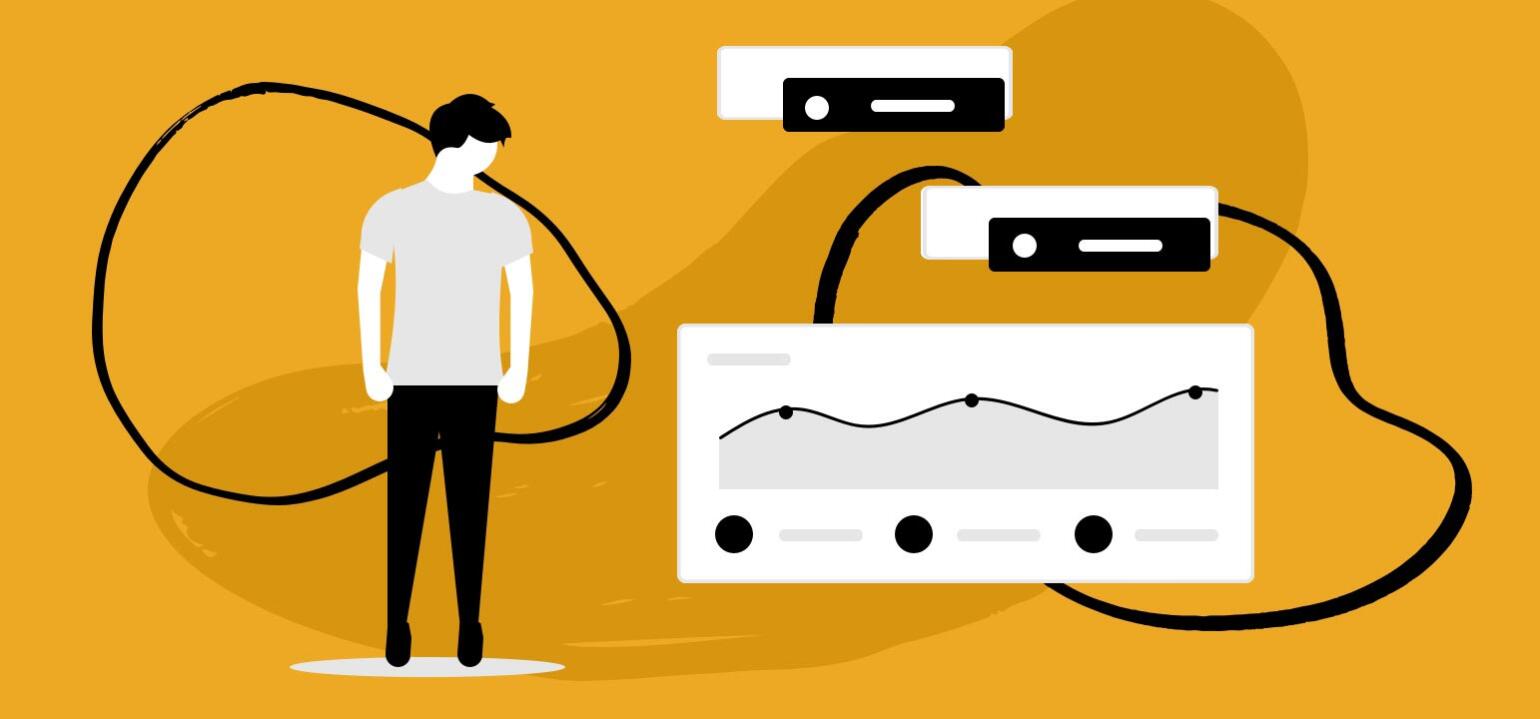
Why It’s Important: Great websites are lengthy, involved processes. You don't want to spend time and money only to launch it and leave it; many of your initial assumptions can change and it's best to think of a website as a dynamic publication rather than a static brochure. Analytics will inform your hunches with real data.
12. Web Hosting
“Hosting is a broad term that typically covers a number of different pieces of a scope. So, it's important to also make sure that whoever your vendor recommends takes security and updates seriously”
Do you have a web host in mind already? If not, ask for options. The vendor will have clear preferences at various price points. For example, NMC has its own infrastructure at AWS and hosts many of our clients there. Some, thought, have needs that are better suited for a host like WP Engine or they may come to us with a hosting relationship already in place. Based on your previously outlined technical requirements, the partner can recommend the best fit for your needs, but if you have a preference (or mandate) let that be known upfront.
Additionally, hosting is a broad term that typically covers a number of different pieces of a scope. So, it's important to also make sure that whoever your vendor recommends takes security and updates seriously. Check with them to get an idea of things like:
- Who handles site backups?
- Is there an automated process for the recovery files and the database? Is this included, or an extra fee?
- Is a caching or content delivery network (CDN), which help with performance, included in the fee?
- What security safeguards are in place?
- Is there a guaranteed level of uptime?
- For open source CMS' like WordPress and Drupal, does the host also manage the ongoing core and plugin/module updates (these are important!)?
Why It’s Important: Different hosts offer different technical abilities, security, speed, and reliability. Letting a vendor use its preferred provider means letting them use one for which its very familiar, which means fewer hiccups down the road.
13. Web Design Examples for Websites RFP
This one's easy: which websites do you like or admire, and why? It can be the overall experience or specific, discrete elements like a single contact form or image. Include examples of "best of breed" websites within your industry so the vendor can get a feel for the market leaders. Excellent example sites from other, unrelated industries are useful too.
You can typically find lists of website examples and trends by industry by Googling around, and these are a great starting point to get an idea of what others are doing. We even keep some curated lists for our own reference to check out, such as examples of content heavy websites, digital health website examples, environmental and clean energy website examples, and plenty more!
Why It’s Important: A website is worth a thousand words. It can be difficult to explain your vision so providing concrete examples of websites whose user experience you'd like to emulate will communicate a lot of value to the vendor and help clarify what we're all in for.
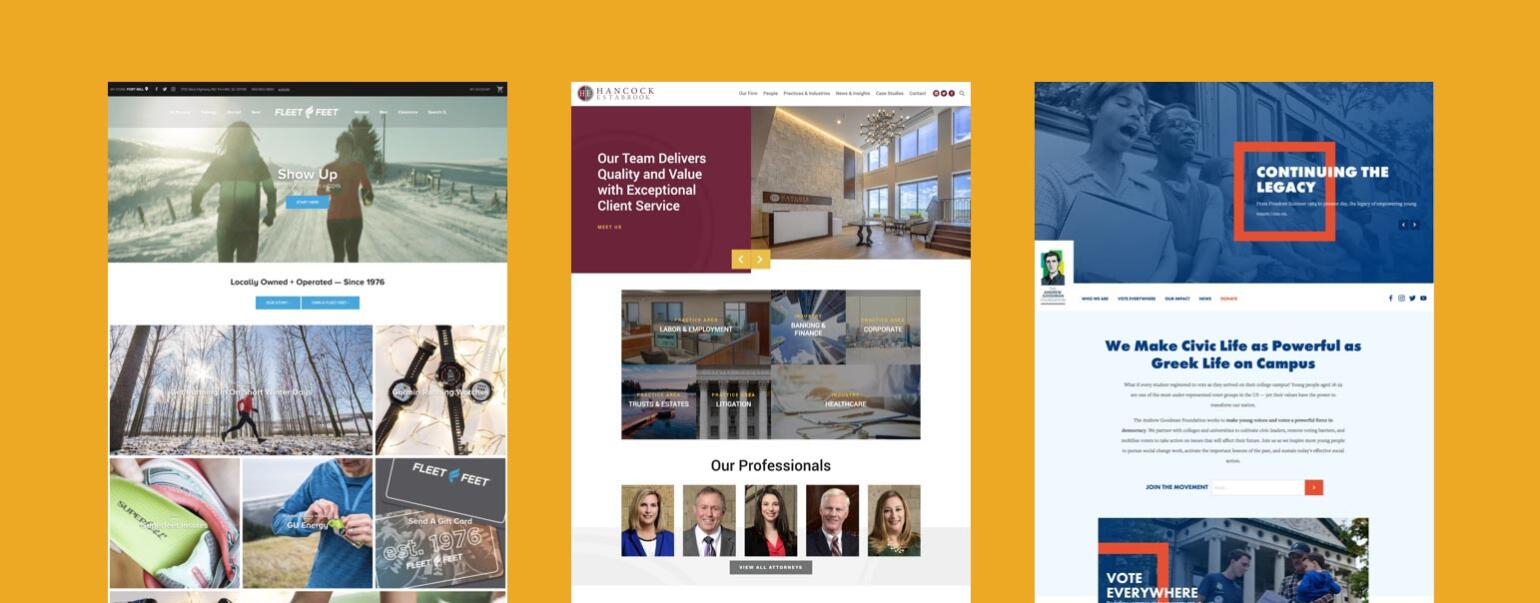
Need Help Find Web Design Inspiration?
View Our Work14. Criteria for Selection
You’re going to get a lot of different proposals back and each company will have different strengths, reputations, and capabilities. Some will compete on low cost; others on best quality; still others on more features. Figure out what you want in a vendor: cheapest option? Fastest delivery? Highest quality? Is a distributed team OK, or do you need every member to be local to your headquarters? Are sub-contractors OK or only full-time in-house staff? You’re balancing the expertise of the team with the limitations of your budget but in the end, you want the best work (and partner) that you can afford. No doubt several of these are typically important, so weight them according to what matters most to you.
Remember, the goal of the proposal you receive back is to evaluate the quality of vendor fitness for your project. Some questions you might ask the proposer to include in the reply:
- Examples of similarly-complex projects (to assess technical capability)
- Client references and whether email or phone is better (to assess credibility)
- Project timeline with major tasks and milestones (to assess process)
- Project budget by line item (to assess process)
- Plan for mobile / responsive design (to assess familiarity with current trends)
Why It’s Important: You’ll encourage the company to focus the proposal on its qualities that matter most to you, which means not wasting time on the things it does well that you don’t care about. A vendor might be an expert in some service or possess some charateristic that’s important to your project’s success and fail to mention it, thinking it’s not worth it.
15. Format & Proposal Timeline
Does the proposal need to be submitted in a particular format, such as MS Word or PDF? Do you require signed & notarized hard copies? Does it need to be single-spaced with no staples (we've actually seen this a few times, believe it or not)? Is it OK for the vendor to use freelancers or sub-contractors or does every member of the team need to be full-time? What's the timeline for submitting the proposals? Typically, there's a deadline for receipt, for selecting semi-finalists, for scheduling interviews and for final selection. Do the semi-final interviews need to be in-person or is remote OK? This is all standard fare but it can be easy to overlook.
Finally, how much detailed information do you require about the vendor? If you need granular details, such as the names, titles, and bios of the vendor's team working on it, be sure to ask. For large teams, who will be available to work on the project may change depending on the vendor's production schedule.
Why It’s Important: Different hosts offer different technical abilities, security, speed, and reliability. Letting a vendor use its preferred provider means letting them use one for which its very familiar, which means fewer hiccups down the road.
Great RFPs are Easy (When You Know What to Include)
These are the essential elements to include. It may seem like a lot but there's a really good chance you've already answered most of these questions in conversations with colleagues and your task in selecting a good vendor is just to get them down on paper. Obviously this list isn't all-inclusive and there may be other elements to include but if NMC were to receive a request for proposal that included each of these bits, we’d be overjoyed at the thoroughness! It signals to us that you’re taking the project seriously, that you’re investing time to understand what success means to you, and to identify what you’re really looking for. It says to us, “Hey, we’d be a great partner to work with!” If your vendors are excited about the work, it’ll likewise lead to better outcomes.
Again, the better the RFP is, the better the proposal your vendors can send in response. Now, you're ready to get started! Feel free to use the example web design RFP template we prepared based on this post. Maybe you already have an RFP? We happen to know an experienced web vendor we'd be happy to recommend, so send it our way! Either way, best of luck with your project.


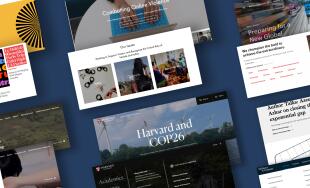

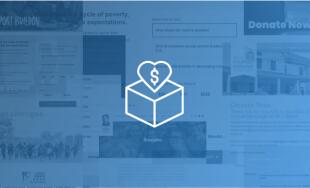

Comments
Bmspower
As someone who's not very tech-savvy, I was a bit intimidated by the idea of creating a website for my business. But thanks to , the process was smooth and hassle-free. They guided me through every step and delivered a stunning website that perfectly represents my brand.Frankie
However, the Tax Payer Relief Act of 1997 changed that to include gold bullion bars also.If you forget to pay some credit card bill, let paying that interest and late charge be a lesson. Holding
stocks and bonds is fine, foor the most part.
http://www.troum.com/author/admin/
Marylin
Guarantees that your investing will still increase.One excellent choice that is often overlooked is create gold bullion for
your IRA. Silver bullion bars andd coins are allowed in Ira.
http://www.thinkenergygroup.com/author/47thinkgroup/
Chicago Jacket
Wow its a very good post. The information provided by you is really very good and helpful for me. Keep sharing good informationHollywood Jacket
Extremely go through article. I have never seen such beautiful article.Mens Suits
Really enjoyed reading your blog.It is highly informative and builds great interest for the readers.Movie Jacket
If you're in the services or consulting business, you know all about RFPs: Requests for Proposal are how many professional agencies win new work.Natasha
Great content. Please keep up writingAbid Bazmi
I want to change my niche from quizzes to game. I am a designer of Sneeza Cool Math Games. You can visit at https://www.sneeza.com/cool-math-games/ . Will this change hurt my traffic or not. Thankes in advanceSneeza
Great tips and guideline. Thanks for making us readers more awared. Waiting for your next post.https://thaitaan.com/
This paragraph is in fact a pleasant one it assists new web viewers, who are wishing in favor of blogging.Brown Leather Jacket mens
This is a fantastic and motivating post. I am really delighted with your excellent work. <Clay S NMC team member
Hey Allan,It's a good question! In our experience, they're typically not necessary and usually act as a distraction, or worse a deterrent, in responses. The one thing I'd note is that if there are very specific terms, such as a required support agreement or very specific ownership or hosting arrangement, it's worth at least mentioning in the RFP so no one is surprised in the end. But the full Terms and Conditions is usually overkill to include.
Allan Wright
When drafting an RFP in your opinion would it be advantageous at that point to include Terms & Conditions that may govern any subsequent business award, rather than waiting till RFQ stage and have it declined? The candidate may think these are too onerous or may wish to have amendments discussed and agreed prior to proposal submission. Ts&Cs may govern (any) nature of proposal response, if any at all.Meave
Much obliged, Nathan. A decent outline of the RFP layout and data to consider when going to showcase—much appreciated.The following stage of coordination while dispersing an RFP is somewhat unclear to me. I can't perceive any tremendous free RFP indexes, so I expect that the vast majority physically connects with likely merchants if not paying to showcase. This is what we appear to do at my business, and I will keep on doing it. However, if anyone has thoughts, correspondence formats, and so on to work on this cycle, that would be incredibly important.
Tejas
I have to submit state Bid with RFP and don't know where to start. The deadline is beginning June is there someone can help me please.Geoffrey Barnes
Hey,Thanks for putting together this post on how to write a great website RFP .It is a great read. I particularly find your thoughts on format & proposal Timeline interesting
.Keep up these insightful posts.
Cheers!
Marcelo
Great article, thanks a lot.I would advice about legal aspects, but really is a very good structured RFQ structure :)
Maria Tayer
Thanks Nathan for giving brief overview of the RFP template and information. This is just perfect. This article basically covers all the information needed. Thanks for sharing this information with us.Andrew
Great article!Can you write a post about "How to promote your RFP to the right candidates" ? or post any advice on this?
That to me is the hardest part - making sure that agencies/studios see your RFP.
Rick Dunne
hmmmm I agree, as a former freelancer sending a good proposal after a handshake agreement was always paramount as to whether or not a deal went through or not.On that note, with that experience, I've been recently designing proposals templates with a strong focus on branding and using web technologies to get deals done for the better.
Here's a free product one that can be applied to any digital product you're producing, and I would love to get some feedback from you awesome fellows if you like it or not
https://qwilr.com/templates/product-proposal-template/
Philip Tommy
A very useful information for people who are working in the web development field. Being in to web development this is certainly a new information for me.Thanks a lot for sharing this.Good Work.Andrew Newey
Thanks Nathan. A good overview of the RFP template and information to consider when going to market. Thanks.The next step of logistics when distributing an RFP is a bit vague to me. I cannot see any good free RFP directories, so assume that if not paying to go to market most people manually reach out to potential vendors. This is what we seem to do at my business and I will continue to do. But if anybody has any ideas, communication templates, etc... to simplify this process, that would be extremely valuable.
Nathan
A great, detailed RFP makes all the difference, Cathy! If you get any leads from folks who don't have one -- and aren't sure where to start -- be sure to send them here ;)Cathy Mayhue
This is a typical RFP structure, makes life of website developers like us very easy. A good RFP makes it very easy to gauge the cost and effort estimation as scope of work becomes crystal clear and we are on the same page with our clients. I have worked with clients before, who gave a single line brief about the project or even worse just a verbal description and I have suffered majorly as there were lots of conflicts at the end because of the differences in the client's expectations and the delivered product. Now I never apply with out a detailed RFP in my email box.Leave a comment